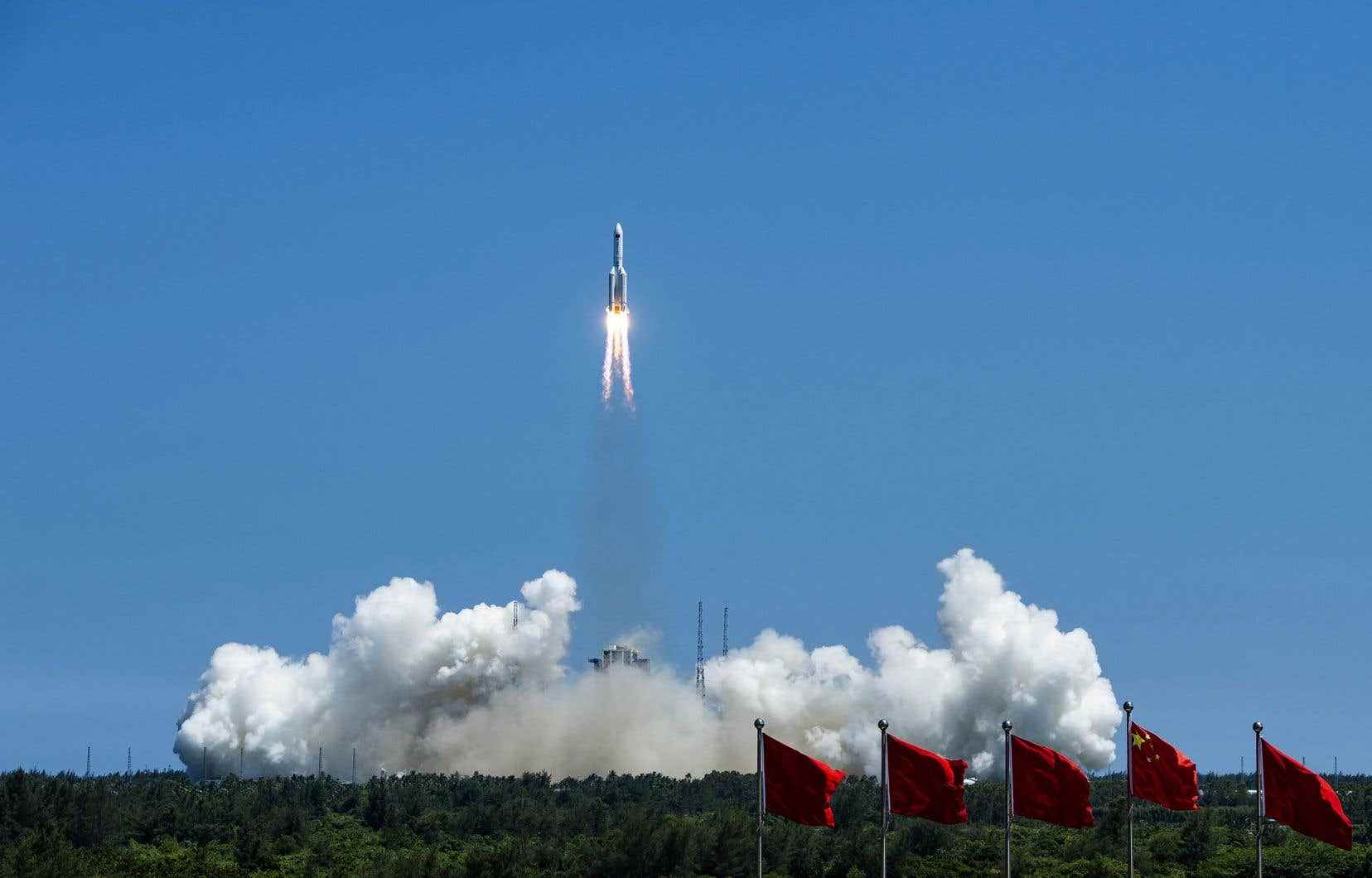Astronauts accessed the new module just docked to China’s under-construction space station for the first time on Monday, according to footage from state broadcaster CCTV.
China launched the second of three space station modules into space on Sunday. Tiangongwhich should be fully operational by the end of the year.
Equipped with three sleeping areas, toilets and a kitchen, the machine, baptized Wentian will serve as a backup platform to control the station in the event of a failure.
The laboratory module also has spaces for scientific experiments and includes an airlock which will become the preferred passage for spacewalks.
On Monday, just hours after the spacecraft docked at the station, three Chinese astronauts from the Shenzhou-14 mission were able to enter the module.
The crew is seen opening an airlock and accessing Wentian in weightlessness, according to images from Chinese television CCTV.
The three astronauts, including a woman, arrived in June in the space station, for a mission of approximately six months. They are due to host the third and last module of the station in October, Mengtian.
The station will then have its final T-shaped shape. It will be similar in size to the defunct Russian-Soviet Mir station. Its life should be at least 10 years.
The finalization of Tiangong will also allow China to carry out, for the first time, a crew relay in orbit.
This relay should take place in December, when the astronauts of the Shenzhou-14 mission, currently in the space station, will give way to those of Shenzhou-15.
China has been investing billions of euros in its space program for several decades.
The Asian giant sent its first astronaut into space in 2003. The country landed a machine on the far side of the Moon in early 2019, a world first.
In 2020, China brought back samples from the Moon and finalized Beidou, its satellite navigation system, a competitor to the American GPS.
In 2021, she landed a small robot on Mars and plans to send men to the Moon by 2030.
Next year, the Asian giant plans to launch a space telescope whose field of view will be 350 times greater than that of Hubble, the legendary NASA space telescope launched in 1990 and still in operation.
